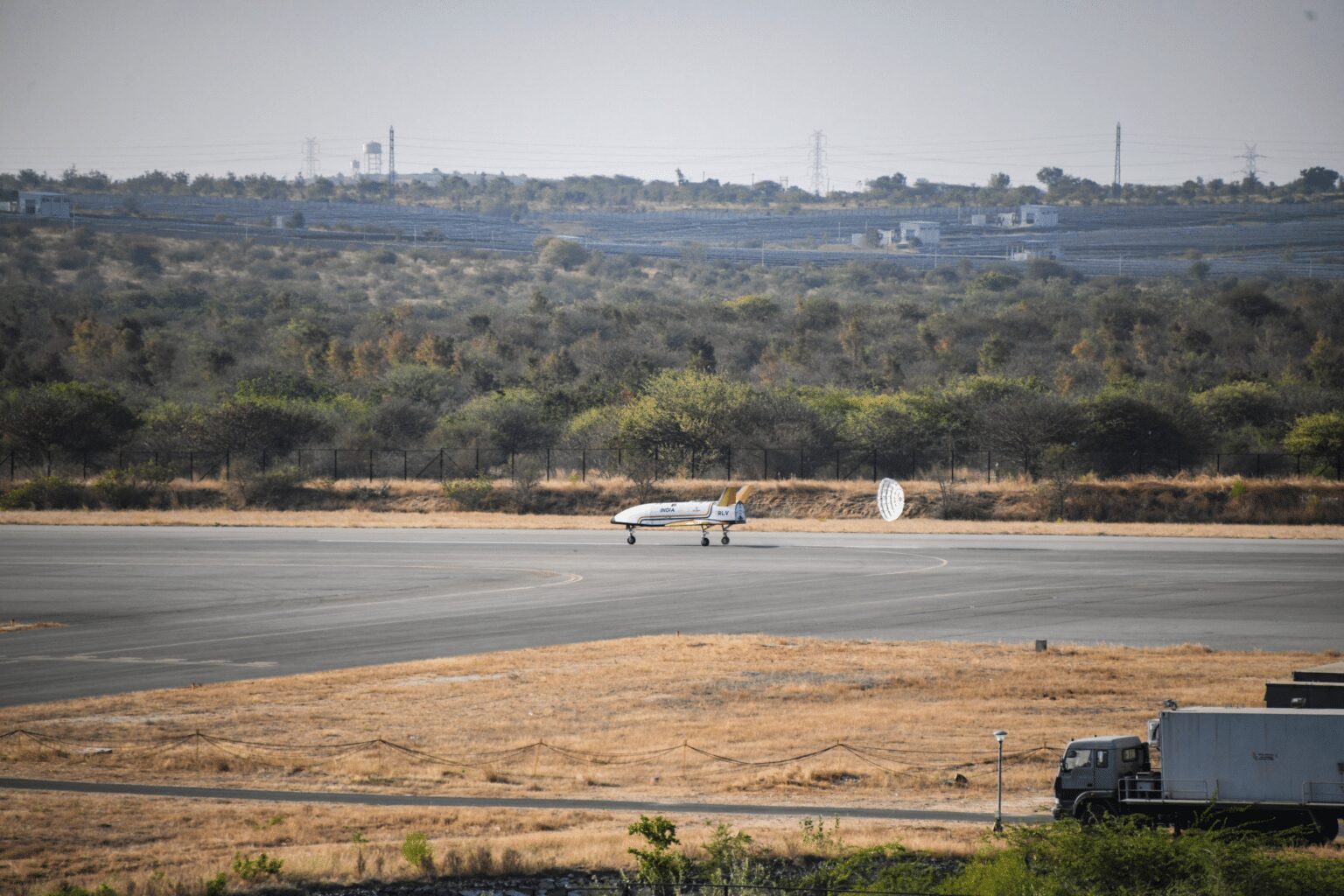Bengaluru/ April 2, 2024: The Indian Space Research Organisation (ISRO) on Sunday released a statement, regarding the success of its Reusable Launch Vehicle Autonomous Landing Mission (RLV LEX) landing test. The project had the ISRO, the Defence Research & Development Organisation (DRDO), and the Indian Air force working together.

As per ISRO’s Twitter statement, the landing test of the RLV LEX took place in Chitradurga’s Aeronautical Test Range (ATR) in the state of Karnataka, in the early hours of April 2, 2024.
According to an ISRO news release, the RLV was launched at 7:10 a.m. by an Indian Air Force Chinook Helicopter as an ‘underslung load’ and ascended to an elevation of 4.5 km. (above MSL).
The Reusable Launch Vehicle was released midair, at a descent of 4.6km, after all, its specified criteria were met using the Mission Management Computer Command. According to the press release.
The criteria for the RLV’s release by ISRO
This included ten parameters such as velocity, position, altitude, and body rates, among others. The RLV was released on its own. The Reusable Launch Vehicle subsequently utilized the Integrated Navigation, Guidance, and Control system to execute approach and landing actions before landing autonomously on the ATR airstrip at 7:40 am. ISRO thus accomplished the autonomous landing test of a space vehicle.
According to ISRO, the RLV was designed to serve as a base flight for a number of technologies, such as hypersonic flight, autonomous landing capability and powered cruise flight. In the future, the RLV model will have an advanced version and go on becoming the first stage of the country’s Reusable Orbital Launch Vehicle.
The fuselage (body) of the RLV is made up of two vertical tails, double wings, and a nose cap. Elevons and Rudder, which are symmetrically positioned active control surfaces, are also included.
On May 23, 2016, the RLV successfully flew from Andhra Pradesh, demonstrating key technologies such as autonomous guidance, control and navigation, reusable thermal defense system, and re-entry mission management. The vehicle landed on an imaginary airfield over the Bay of Bengal during this operation.
The early morning landing trial on Sunday was the second in the program’s run of experimental flights. One of the primary goals of mastering RLV technology is to obtain low-cost space access.
The tests conducted by ISRO on the RLV are the base for a Space Re-entry Vehicle, as the organization continues to work on several programs to make space travel cheaper. ISRO has been known to build rockets at a quarter of the NASA price or any other organization requires.
India’s involvement in the Space race is slowly starting to bear fruit, as it will host the Space Economy Leader’s Meet (SELM) in Bengaluru as a part of the G-20 Summit. Which will be a gathering of all the Heads of the various Space Agencies.
The SELM will include two events, a forerunner will be held on the 17 & 18 of this month in the scenic city of Shillong. Where the G-20 Ambassadors of the nations will attend a round table meeting there.
In Bengaluru, the SELM will witness the Heads of various Space Agencies of G-20 countries. Where they will again discuss the bilateral opportunities in the wide area of space exploration. A meeting involving the leading space leaders will also take place. This year’s SELM theme is ‘Towards a New Space ERA(Economy, Responsibility and Alliance)’.













